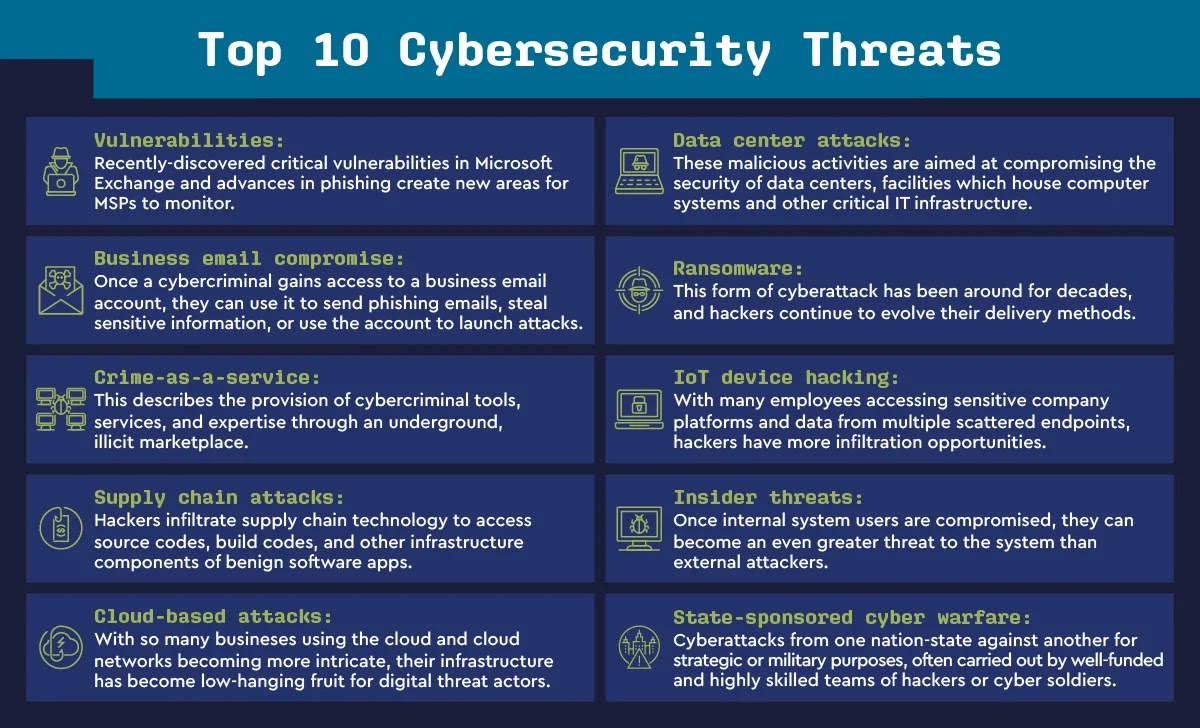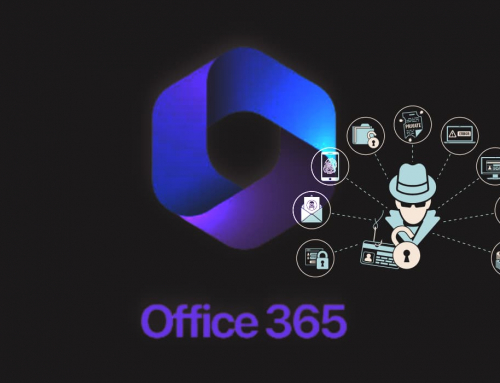Businesses face a myriad of information security risks that can be detrimental to their operations.
Information security threats evolve rapidly, and new threats may appear that are not yet known. Nonetheless, here are some major cyber security threats that have been observed in recent years:
- Phishing Attacks: Phishing involves fraudulent attempts to obtain private information, such as usernames, passwords, and credit card details, by disguising as a trustworthy entity in electronic communication.
- Ransomware: Ransomware is a type of malware that encrypts the victim’s files and demands a ransom payment to restore access to the data.
- Distributed Denial of Service (DDoS) Attacks: DDoS attacks involve overwhelming a network or website with a rush of illegitimate traffic, causing a service disruption or making it unavailable to legitimate users.
- Data Breaches: Data breaches occur when unauthorized individuals gain access to private or confidential information, often resulting in the exposure of personal data, financial records, or intellectual property.
- Insider Threats: Insider threats refer to security risks posed by individuals within an organization who have approved access to systems, networks, or data and misuse or abuse that access.
- Internet of Things (IoT) Vulnerabilities: As the number of IoT devices grows, so does the potential for security vulnerabilities. Inadequate security controls in IoT devices can lead to illegal access, data breaches, or exploitation.
- Social Engineering Attacks: Social engineering involves manipulating individuals to divulge private information or perform actions that may compromise security. This can include methods such as impersonation, pretexting, or baiting.
- Advanced Persistent Threats (APTs): APTs are targeted attacks conducted by sophisticated threat actors, usually nation-states or well-funded organizations. APTs aim to gain unauthorized access and stay undetected within a target network over an extended period.
- Cloud Security Risks: As organizations increasingly depend on cloud services, there are risks associated with misconfigurations, data breaches, account hijacking, and insecure APIs (Application Programming Interfaces).
- Zero-Day Vulnerabilities: Zero-day vulnerabilities are software vulnerabilities that are unknown to the software vendor or security group. Threat actors can exploit them before a patch or solution is ready.
Source: https://cybersecuritynews.com/information-security-threats-for-business/








Leave A Comment